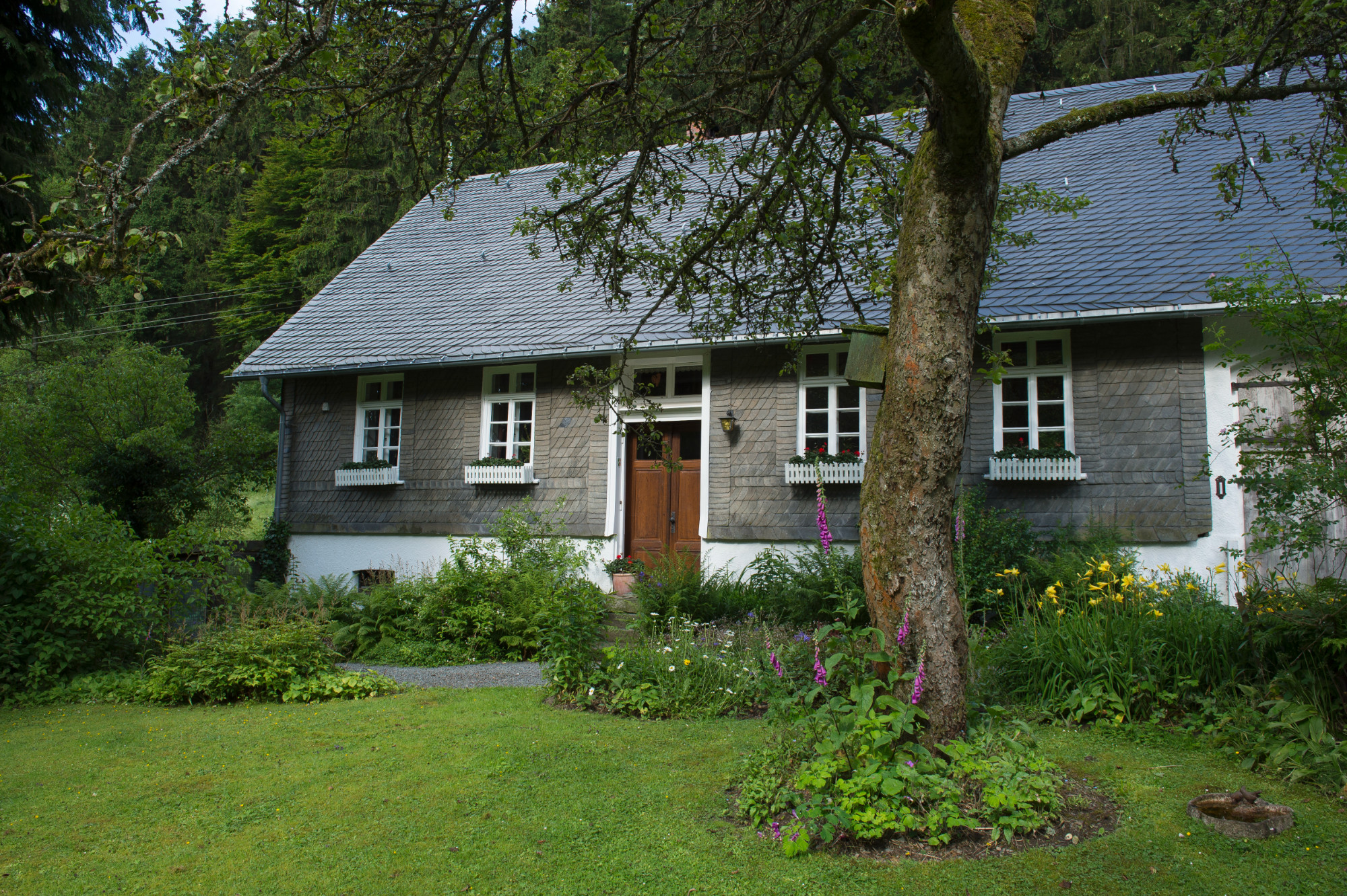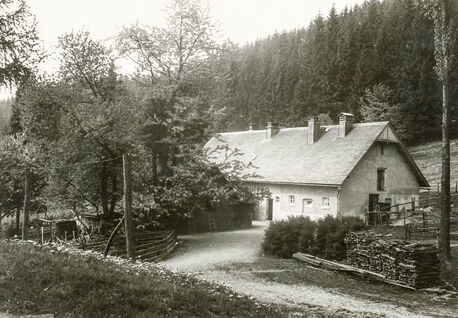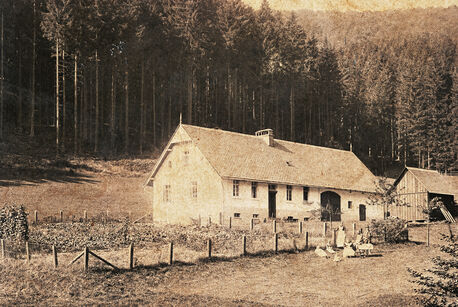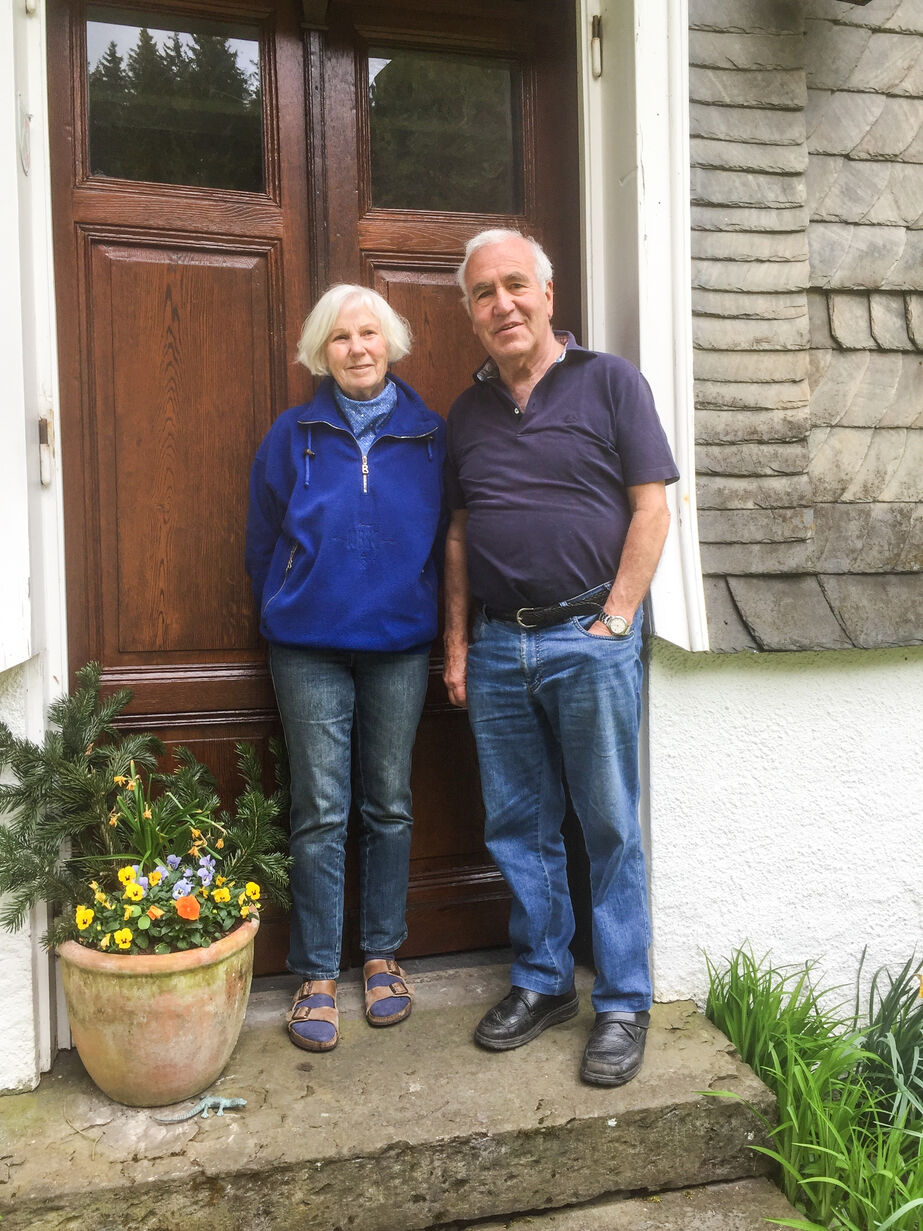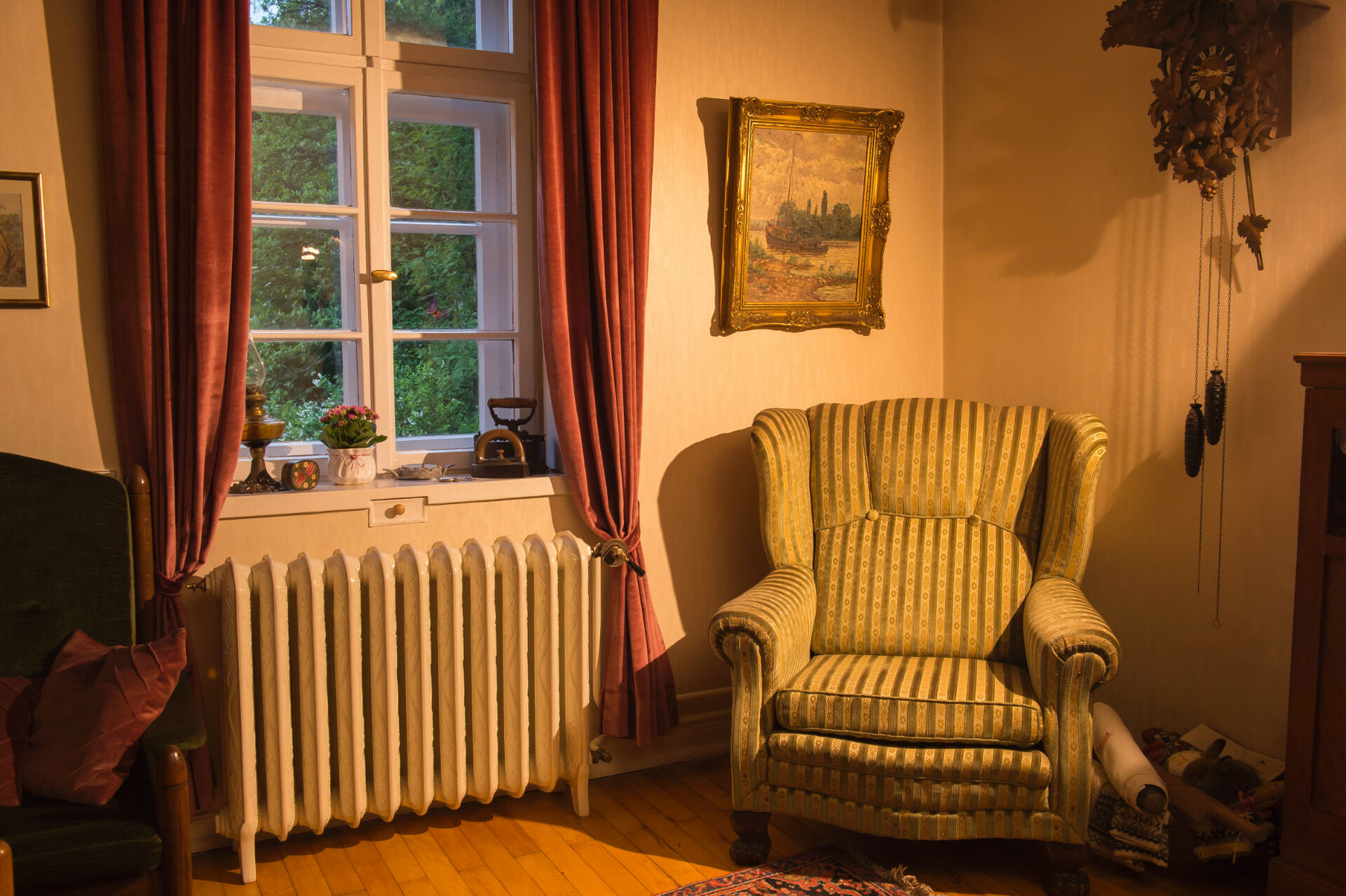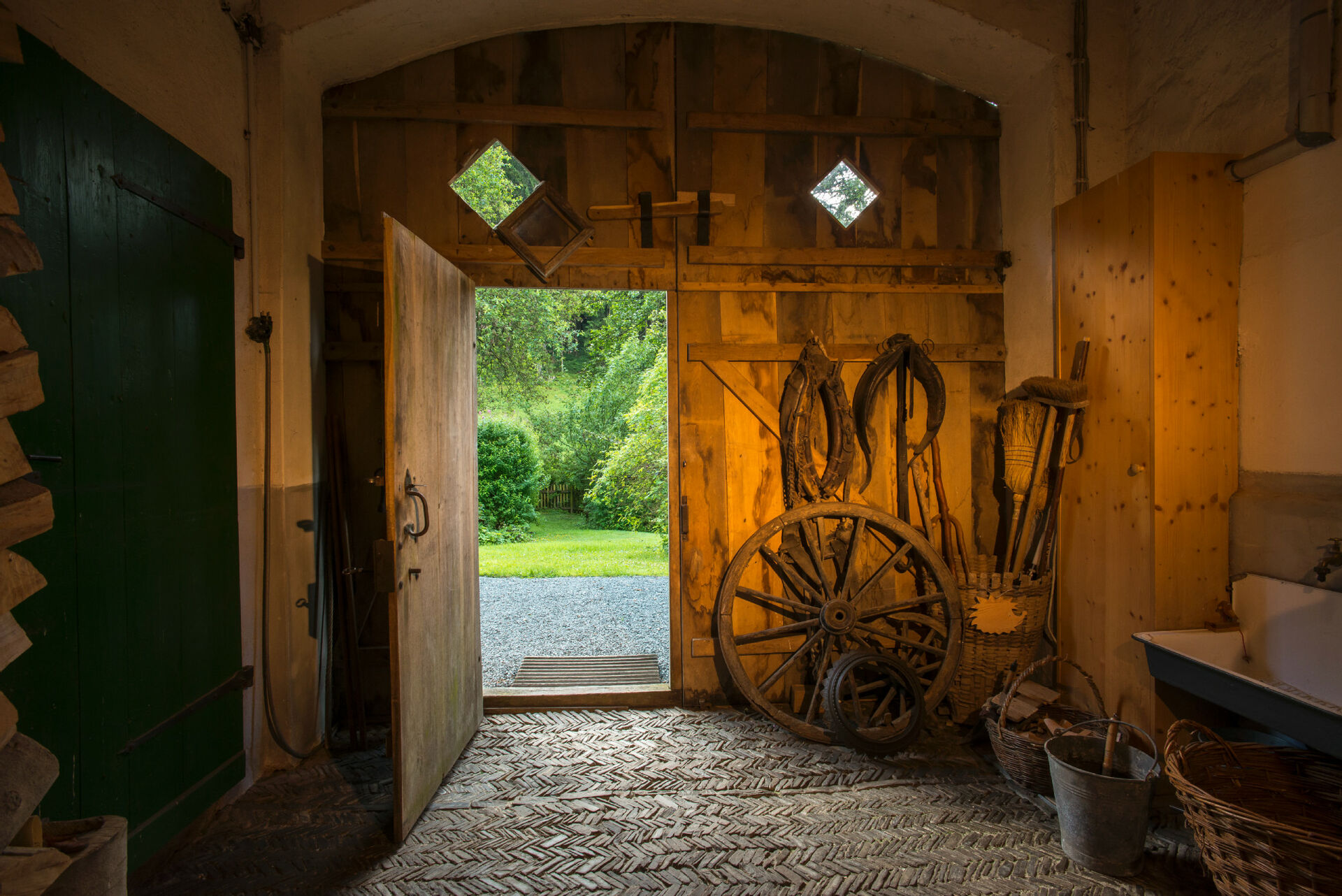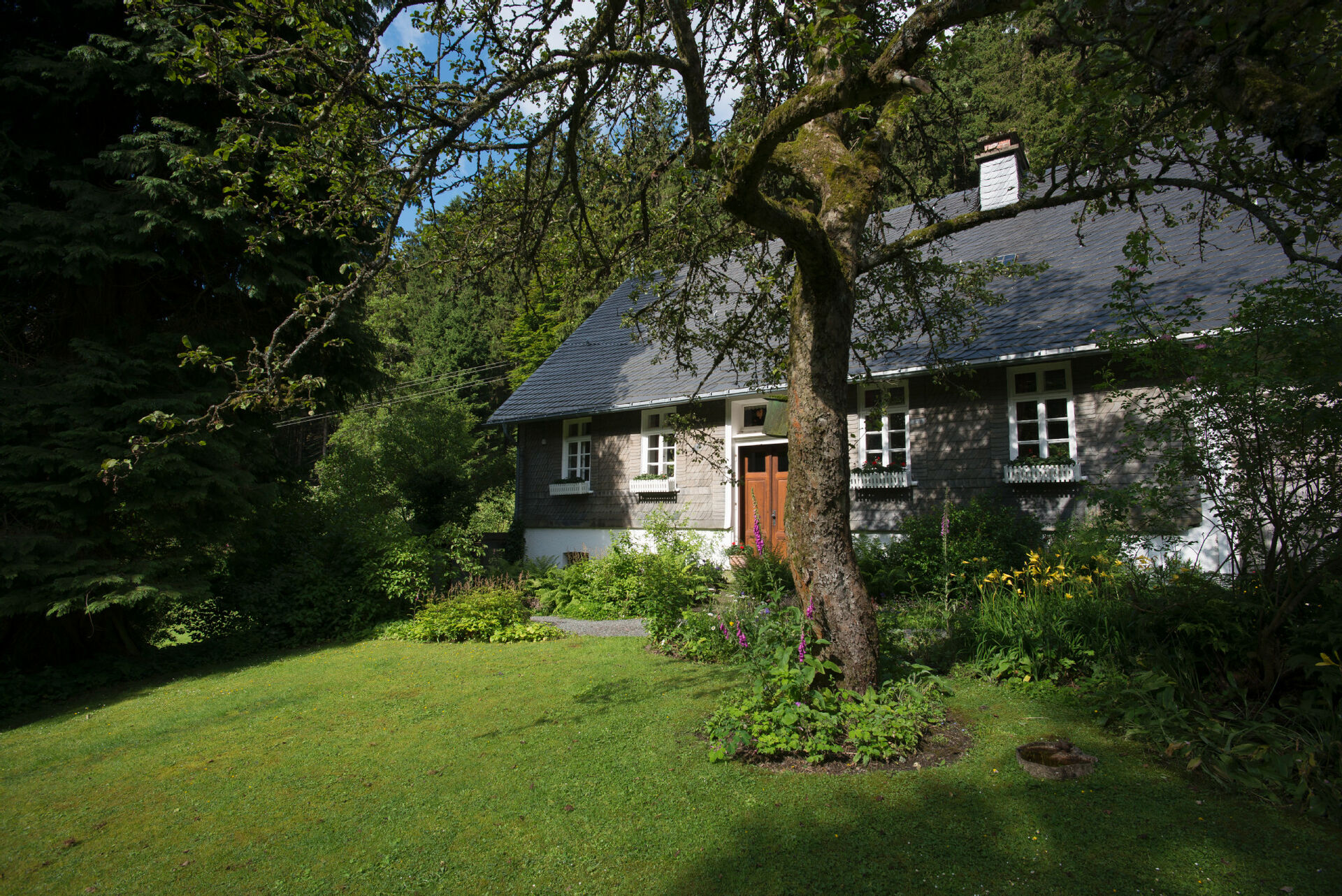Old forester's lodge
Family life between floating gables
It took less than a year to build the old forester's lodge in Rehsiepen. In 1885, the first forester moved from a run-down building into the modern Querdeelenhaus. 13 foresters and their families lived and worked in this combined residential and farmstead until 1971. When the foresters then moved to the outskirts of the village, the house was almost demolished after just 85 years. However, the current owners lovingly restored it and applied for listed building status. The entire complex, including the cottage garden, trees, pastures and adjacent wetlands, is now protected. It is maintained by a foundation.
Forestry is a relatively young branch of industry. It was not until the beginning of the 19th century that the duchy of Westfalen declared the monastic forest property a state forest and introduced forestry. Prior to this, forests were hunting grounds and pastures. Farmers obtained timber for building and firewood and also burned wood to ash for fertilizer. This changed when forestry regulations were introduced for the Grand Duchy Hessen. There was now an administration with an Oberforst-Kolleg in Darmstadt. In 1806, a sub-forester asked for a house to be built "because there was no suitable accommodation for him to rent (...)." In 1809, the first forester's lodge in Mittelsorpe was ready to move into. It was demolished in 1886 and rebuilt in Oberkirchen rebuilt. You can still find it there today. The first Rehsiepen forester's lodge was completed at around the same time as the demolition: a modern and simple house with decorative floating gables, held up by turned posts.
From the 1860s onwards, Querdeelen houses were solidly built residential and farm buildings. Everything was under one roof, but people and animals were clearly separated from each other by the so-called Querdeele (or Tenne). All entrances lead into the house on the long side. This is also referred to as the eaves side because the eaves, the drip edges of the roof, run towards this side. A tall wagon could fit through the door of the stone-paved debel - similar to a garage inside the house. The smaller part of the building consisted of stables for cows, horses and pigs. Above this was a hay and fodder loft. The larger half of the house was used for living. Like the stable, it had a separate entrance from the outside. The kitchen and living rooms were on the first floor. There was additional living space on the upper floor, as well as a smokehouse and a loft. The living area had a full basement, which also housed the bakery and laundry room.
Forester Schlegel was the first official in the new forester's lodge. He had helped plan the building and had modern ideas: the residents enjoyed running water, which was fed into the house from the well, and had daylight in all the living rooms. However, house planner Schlegel left his post after just two years. He was followed by forester Christian Josef Schnettler and his wife, and gradually by four children. Not all of the residents' family relationships have been handed down so precisely. Many employees or subtenants in particular remain nameless to us. In 1970, Jürgen Seckelmann closed the door as the last and provisional forester. A new era then dawned: Bärbel and Peter Michels bought the house at auction - they were only 23 and 24 years old at the time. They have lived here ever since, renovating the building and preserving the historic grounds. The complex is now a listed building and has been transferred to a foundation.
Vertelleken
Chatting out of the sewing box...
"The new forestry regulations of the 19th century brought unexpected problems for the population. Previously, people simply helped themselves to the forest when they needed something. The administration now took a critical view of this: the trees should grow as undisturbed as possible in order to obtain straight, long trunks. No grazing animals should nibble on them, no farmers should cut wood for their own buildings. The foresters kept track of these offenses - and it was often children who were punished. Their parents sent them into the forest to collect bedding for the stables. If they were caught, they were given the entry "convicted" in their file and had to pay a fine. Forester Schlegel wrote it down neatly: 2 pfennigs for collecting leaves, 15 pfennigs for collecting moss, 5 pfennigs for plucking grass. It was certainly particularly bad that the forester also "confiscated" the tools: The valuable sickle, hatchet or rake were also gone after such an excursion."



